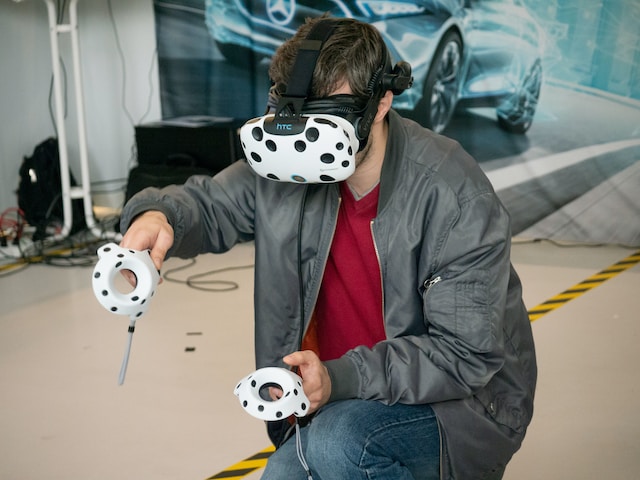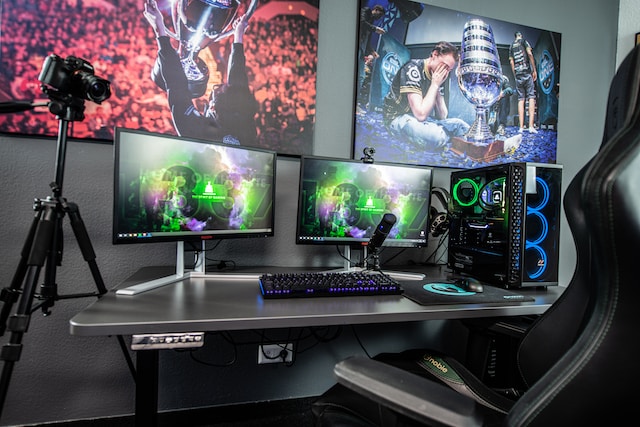Gone are the days of passive consumption; the future of engaging entertainment hinges on personalisation and user-driven content. Today’s audience seeks active participation, and this shift fuels the rise of interactive platforms that blur the lines between creators and consumers. From immersive storytelling in virtual reality (VR) to choose-your-own-adventure narratives in streaming platforms, the emphasis is on empowering users to shape their entertainment experiences.
Advanced algorithms analyse user preferences, tailoring experiences to individual tastes. This translates into recommending themed content based on past preferences or providing personalised suggestions, elevating the user experience to new heights. The integration of social elements within entertainment platforms fosters communities where users can connect, compete, and collaborate.
In this article, we’ll explore popular trends that are fostering interactive entertainment.
Streaming Revolution: Beyond Passive Viewing
Streaming platforms aren’t just about binge-watching anymore; they’ve evolved into interactive hubs. Twitch, YouTube, Facebook, etc., are transforming into interactive spaces where audiences actively participate.
The appeal lies not only in entertainment but also in the unique connection between creators and their audiences. Viewers can participate through live chats, donations, subscriptions and even influence the direction of the content in real time. This level of interactivity is unprecedented and creates a sense of belonging within these virtual communities.
The rise of live streaming has led to new career opportunities. Content creators can monetise their streams through various means, such as ads, sponsorships, and viewer donations. Some have even transformed their passion for streaming into full-fledged businesses.
Let’s also not overlook the impact of live streaming on businesses. According to a verdict forecast, live streams will be strategic for retail sales in the coming years, and McKinsey predicts that 10%-20% of all e-commerce sales will come from live streams by 2026.
Many brands have harnessed live streaming for marketing and connecting with their audience. From product launches to behind-the-scenes glimpses, companies are leveraging live streams to humanise their brand and build deeper connections with consumers.
Interactive Gaming Platforms
The gaming industry has been at the forefront of interactive experiences, constantly pushing boundaries. Gaming platforms have metamorphosed from solitary experiences to vast, interconnected worlds where players shape the outcome. For instance, slot games, once confined to physical casinos, have seamlessly transitioned into the digital realm, attracting a vast audience seeking accessible entertainment.
Beyond the mechanical pull of a lever, today’s slot games merge cutting-edge technology with immersive storytelling and interactive elements. Themes, characters, and narratives intertwine seamlessly, captivating players in a holistic entertainment experience. Now, you can access a wide range of popular slot games, including classics like Rainbow Riches and Fishing Frenzy or jackpot games like Real King Mega and Aztec Spins. These games are playable on any device.
Moreover, players can now engage in live streams of casino games with live presenters anchoring these events. This innovative approach fosters a shared and interactive environment that enhances the overall entertainment experience.
Augmented Reality (AR) and Virtual Reality (VR)

AR and VR technologies are unlocking immersive experiences like never before. From VR gaming to AR-enhanced apps, these technologies are becoming more accessible. Companies like Oculus (now Meta Quest) are pushing boundaries with standalone VR headsets, making VR gaming and experiences more mainstream.
But these technologies aren’t just limited to gaming; they’re branching out into various entertainment sectors. For example, people can now simulate real shopping experiences or real events like attending a concert using VR headsets. AR is also making waves in advertising and marketing, offering interactive experiences that engage consumers in innovative ways.
The growth and adoption of AR and VR have been remarkable. Statista forecasts predict substantial growth, with the market expected to grow at an annual rate of 12.60% (CAGR 2023-2028). This growth is fuelled by technological advancements, more accessible hardware, and a growing demand for immersive experiences.
In summary
Online interactive entertainment continues to evolve rapidly, driven by innovation, technology, and user demand. As these trends intertwine and evolve, the future promises even more immersive, engaging, and personalised experiences, further bridging the gap between reality and digital realms. Embracing these trends allows us not just to consume, but actively participate in the creation and evolution of entertainment, shaping a more connected and interactive world.





















